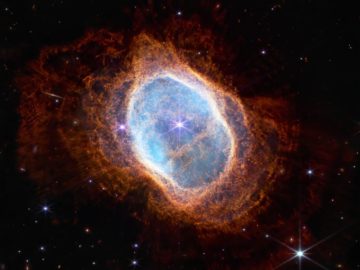Dan Falk in Smithsonian:
 The James Webb Space Telescope, the largest and most sophisticated space observatory ever built, has been sending back images and data for almost a full year now—and in that time it has delivered a treasure trove of information about everything from stars and planetary systems in our own galactic neighborhood to distant galaxies that formed when the universe was a tiny fraction of its current age. Webb has also sent back stunning images that surpass those garnered by its famous predecessor, the Hubble Space Telescope.
The James Webb Space Telescope, the largest and most sophisticated space observatory ever built, has been sending back images and data for almost a full year now—and in that time it has delivered a treasure trove of information about everything from stars and planetary systems in our own galactic neighborhood to distant galaxies that formed when the universe was a tiny fraction of its current age. Webb has also sent back stunning images that surpass those garnered by its famous predecessor, the Hubble Space Telescope.
Webb and Hubble are quite different instruments. For starters, while Hubble is primarily sensitive to visible light, Webb records infrared light that’s invisible to the unaided eye. These longer wavelengths of light pass through clouds of gas and dust that block visible light, letting the telescope peer past such obstacles. It also has a size advantage: While Hubble’s main mirror is 8 feet across, Webb employs an array of 18 small hexagonal mirrors that function like a single mirror 21 feet across.
More here.
